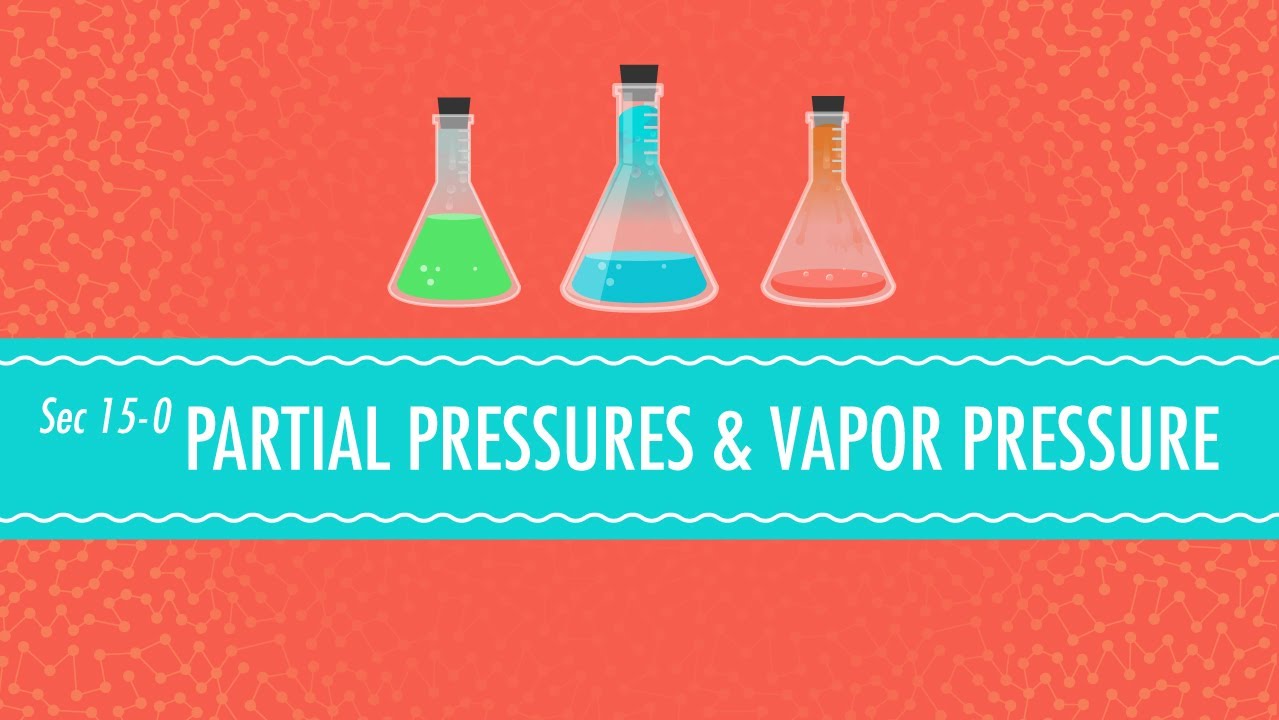
Exploring Partial Pressures and Vapor Pressure Concepts
Interactive Video
•
Science
•
6th - 10th Grade
•
Hard
Standards-aligned
Jackson Turner
Used 1+ times
FREE Resource
Standards-aligned
Read more
10 questions
Show all answers
1.
MULTIPLE CHOICE QUESTION
30 sec • 1 pt
What analogy is used to explain the behavior of gases?
A concert
A football match
A library
A state dinner and a child's birthday party
2.
MULTIPLE CHOICE QUESTION
30 sec • 1 pt
Who was the first to use real science to describe atoms?
Isaac Newton
Albert Einstein
John Dalton
Niels Bohr
3.
MULTIPLE CHOICE QUESTION
30 sec • 1 pt
What did John Dalton's research contribute to?
The discovery of electrons
The development of the Law of Multiple Proportions
The invention of the periodic table
The formulation of quantum mechanics
Tags
NGSS.HS-PS1-7
4.
MULTIPLE CHOICE QUESTION
30 sec • 1 pt
What does the Law of Partial Pressures state?
The total pressure of a gas is equal to its density times its volume.
The volume of a gas is inversely proportional to its pressure.
The pressure of a gas mixture equals the sum of the pressures each gas would exert alone.
The pressure of a gas is directly proportional to its temperature.
5.
MULTIPLE CHOICE QUESTION
30 sec • 1 pt
What is the mole fraction symbol represented by?
Alpha (α)
Beta (β)
Gamma (γ)
Chi (χ)
6.
MULTIPLE CHOICE QUESTION
30 sec • 1 pt
How is the partial pressure of oxygen in air calculated?
By adding the pressures of all gases in the air
By multiplying the total atmospheric pressure by the mole fraction of oxygen
By subtracting the pressure of nitrogen from the total atmospheric pressure
By dividing the moles of oxygen by the total moles of air
7.
MULTIPLE CHOICE QUESTION
30 sec • 1 pt
What is the purpose of collecting gas over water?
To purify the gas
To determine the gas's pressure
To separate the gas from water vapor
To measure the volume of the gas
Create a free account and access millions of resources
Similar Resources on Wayground

11 questions
Exploring Boyle's Law and Its Applications
Interactive video
•
6th - 10th Grade

11 questions
Properties and Behavior of Gases
Interactive video
•
7th - 10th Grade

11 questions
Exploring the Ideal Gas Law and Its Constants
Interactive video
•
6th - 10th Grade

6 questions
Volume
Interactive video
•
6th - 12th Grade

11 questions
Exploring the Behavior of Gases
Interactive video
•
6th - 10th Grade

11 questions
Exploring States of Matter with Bill Nye
Interactive video
•
6th - 10th Grade

11 questions
Phase Changes and Pressure Effects
Interactive video
•
7th - 10th Grade
Popular Resources on Wayground

10 questions
Video Games
Quiz
•
6th - 12th Grade

10 questions
Lab Safety Procedures and Guidelines
Interactive video
•
6th - 10th Grade

25 questions
Multiplication Facts
Quiz
•
5th Grade

10 questions
UPDATED FOREST Kindness 9-22
Lesson
•
9th - 12th Grade

22 questions
Adding Integers
Quiz
•
6th Grade

15 questions
Subtracting Integers
Quiz
•
7th Grade

20 questions
US Constitution Quiz
Quiz
•
11th Grade

10 questions
Exploring Digital Citizenship Essentials
Interactive video
•
6th - 10th Grade
Discover more resources for Science

20 questions
Scientific method and variables
Quiz
•
8th Grade

20 questions
Physical and Chemical Changes
Quiz
•
8th Grade

20 questions
Metals, Non-metals, and Metalloids
Quiz
•
6th Grade

10 questions
Exploring the Scientific Method
Interactive video
•
6th - 10th Grade

20 questions
Scientific Method Review
Quiz
•
6th Grade

20 questions
Microscopes
Quiz
•
7th - 8th Grade

10 questions
Law of Conservation of Mass
Quiz
•
8th Grade

17 questions
7.6D Aqueous Solutions
Quiz
•
7th Grade